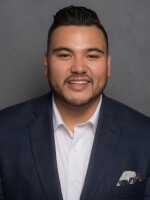that Asian Americans, Native Hawaiians and Pacific Islanders were likely undercounted in half of Ohio in the 2020 US Census.
According to data from Asian Americans Advancing Justice — Asian American Justice Center (AAJC), Asian Americans were likely undercounted in 47 out of 88 counites. Native Hawaiians and Pacific Islanders were likely undercounted in 33 counties.
“What we’ve long suspected and now know through the data analysis itself is that there are many Asian Americans that are missed across the nation,” AAJC Senior Director of Census and Voting Program Terry Ao Minnis said.
The Ohio counties with larger Asian American, Native Hawaiian and Pacific Islander populations tend to be places with potential overcounts of those demographics.
, the US Census Bureau estimated a net overcount rate of in the last census, but AAJC says that that statistic neglects the many Asian American communities that were undercounted in many parts of the country – areas that still need improved census engagement and outreach. The AAJC report notes potential county-level undercounting of Asian Americans rural parts of the Midwest, Mountain West and South.
Minnis said the overall national overcount doesn’t negate or make up for the the overlooked and undercounted Asian American communities. She also stressed the need for improved accuracy in overcounted areas.
“The fact that there was a national number that indicated an overcount, often is sort of the beginning and the end of the story for a lot of people,” Minnis said. “It really is just the entryway to the conversation.”
Similar to the national statistic, Ohio overall saw a net overcounts in the state as a whole — in Ohio, about 4% for Asian Americans and about 7% for Native Hawaiians and Pacific Islanders.
Because census numbers are used for policy making, informing decisions regarding federal funding and planning outreach for the next census, there is concern from AAJC that the 2.62% statistic paints a broad stroke for Asian Americans.
“Policy makers will take the national number and make an assumption that there are no issues with engagement, no barriers with participation for our communities,” Minis said.
Minnis said she would like to see better metrics from the US Census Bureau that provides more specific details to help people better understand the nuance of inaccuracy at state and local levels.
“The Census Bureau also needs to make sure that it’s doing its job to reach all of the different constituents that they are looking to respond and make sure they’re reaching them where they’re at, rather than trying to just have a one size fit all communications campaign,” Minnis said. “Reaching them all is going to take planning. It’s going to take investment. It’s going to take nuance and actual care.”
for African American, American Indian or Alaska Native and Hispanic or Latino populations.
There are several common barriers for racial minority groups to participating in the census, including language barriers, distrust in government and census misconceptions, such as being only for citizens.
Minnis said those barriers are shared with Asian Americans, Native Hawaiians and Pacific Islanders and she was disappointed to see these groups left out of the topic when the US Census Bureau listed minority groups that needed extra attention and outreach in the 2030 US Census
“Of course, very important, we have to make sure that we are addressing the undercount of the Latino population and the African American population and American Indians and Alaska Natives,” Minnis said. “That doesn’t mean there isn’t still need to make sure that Asian Americans, Native Hawaiians and Pacific Islanders are not missed. We have traditionally been hard to count. We still remain hard to count even if there’s a particular number that looks quote unquote good for one census.”
When determining accuracy of the census, AAJC compares the 2020 Census numbers to current Census estimate data, which is compiled using administrative data such as death and birth certificates and immigration information.
Minnis adds that it is important to understand that data accuracy numbers are also imperfect and estimated. She said the data should be viewed to find trends, not exact numbers or percentages.





